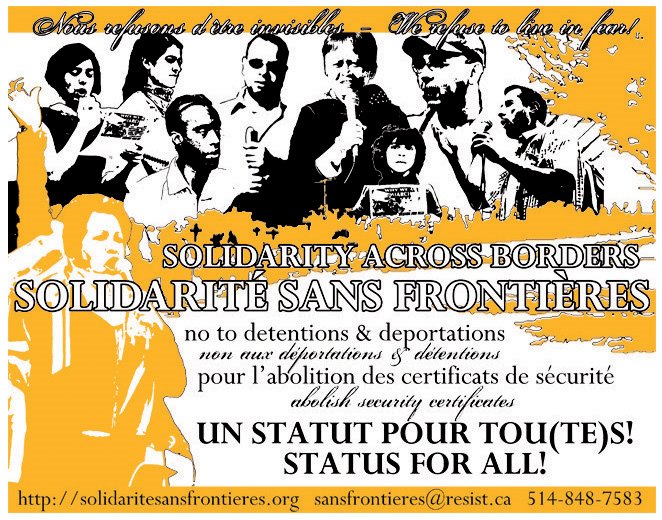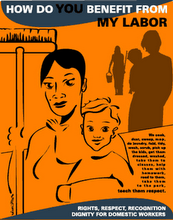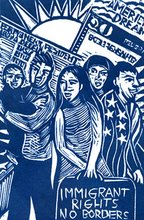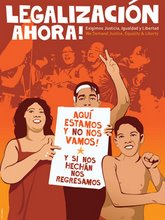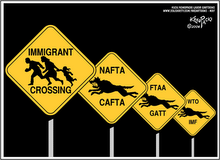TORONTO, June 26 — With an advanced degree in business management from a university in India and impeccable English, Salman Kureishy is precisely the type of foreigner that Canada’s merit-based immigration system was designed to attract.
Yet eight years went by from the time Mr. Kureishy passed his first Canadian immigration test until he moved from India to Canada. Then he had to endure nine months of bureaucratic delays before landing a job in his field in March.
Mr. Kureishy’s experience — and that of Canada’s immigration system — offers a cautionary tale for the United States. Mr. Kureishy came to this country under a system Canada pioneered in the 1960s that favors highly skilled foreigners, by assigning points for education and work experience and accepting those who earn high scores.
A similar point system for the United States is proposed in the immigration bill that bounced back to life on Tuesday, when the Senate reversed a previous stand and brought the bill back to the floor. The vote did not guarantee passage of the bill, which calls for the biggest changes in immigration law in more than 20 years.
The point system has helped Canada compete with the United States and other Western powers for highly educated workers, the most coveted immigrants in high-tech and other cutting-edge industries. But in recent years, immigration lawyers and labor market analysts say, the Canadian system has become an immovable beast, with a backlog of more than 800,000 applications and waits of four years or more.
The system’s bias toward the educated has left some industries crying out for skilled blue-collar workers, especially in western Canada where Alberta’s busy oil fields have generated an economic boom. Studies by the Alberta government show the province could be short by as many as 100,000 workers over the next decade.
In response, some Canadian employers are sidestepping the point system and relying instead on a program initiated in 1998 that allows provincial governments to hand-pick some immigrant workers, and on temporary foreign-worker permits.
“The points system is so inflexible,” said Herman Van Reekum, an immigration consultant in Calgary who helps Alberta employers find workers. “We need low-skill workers and trades workers here, and those people have no hope under the points system.”
Canada accepts about 250,000 immigrants each year, more than doubling the per-capita rate of immigration in the United States, census figures from both countries show. Nearly two-thirds of Canada’s population growth comes from immigrants, according to the 2006 census, compared with the United States, where about 43 percent of the population growth comes from immigration. Approximately half of Canada’s immigrants come through the point system.
Under Canada’s system, 67 points on a 100-point test is a passing score. In addition to education and work experience, aspiring immigrants earn high points for their command of languages and for being between 21 and 49 years old. In the United States, the Senate bill would grant higher points for advanced education, English proficiency and skills in technology and other fields that are in demand. Lower points would be given for the family ties that have been the basic stepping stones of the American immigration system for four decades.
Part of the backlog in Canada can be traced to a provision in the Canadian system that allows highly skilled foreigners to apply to immigrate even if they do not have a job offer. Similarly, the Senate bill would not require merit system applicants to have job offers in the United States, although it would grant additional points to those who do.
Without an employment requirement, Canada has been deluged with applications. In testimony in May before an immigration subcommittee of the United States House of Representatives, Howard Greenberg, an immigration lawyer in Toronto, compared the Canadian system to a bathtub with an open faucet and a clogged drain. “It is not surprising that Canada’s bathtub is overflowing,” Mr. Greenberg said.
Since applications are not screened first by employers, the government bears the burden and cost of assessing them. The system is often slow to evaluate the foreign education credentials and work experience of new immigrants and to direct them toward employers who need their skills, said Jeffrey Reitz, professor of immigration studies at the University of Toronto.
The problem has been acute in regulated professions like medicine, where a professional organization, the Medical Council of Canada, reviews foreign credentials of new immigrants. The group has had difficulty assessing how a degree earned in China or India stacks up against a similar degree from a university in Canada or the United States. Frustrated by delays, some doctors and other highly trained immigrants take jobs outside their fields just to make ends meet.
The sheer size of the Canadian point system, the complexity of its rules and its backlogs make it slow to adjust to shifts in the labor market, like the oil boom in Alberta.
“I am a university professor, and I can barely figure out the points system,” said Don J. DeVoretz, an economics professor at Simon Fraser University in British Columbia who studies immigration systems. “Lawyers have books that are three feet thick explaining the system.”
The rush to develop the oil fields in northern Alberta has attracted oil companies from around the world, unleashing a surge of construction. Contractors say that often the only thing holding them back is a shortage of qualified workers.
Scott Burns, president of Burnco Rock Products in Calgary, a construction materials company with about 1,000 employees, said he had been able to meet his labor needs only by using temporary work permits. Mr. Burns hired 39 Filipinos for jobs in his concrete plants and plans to hire more. He said that many of the temporary workers had critically needed skills, but that they had no hope of immigrating permanently under the federal point system.
“The system is very much broken,” Mr. Burns said.
Mr. Kureishy, the immigrant from India, said he was drawn to Canada late in his career by its open society and what appeared to be strong interest in his professional abilities. But even though he waited eight years to immigrate, the equivalent of a doctoral degree in human resources development that he earned from Xavier Labor Relations Institute in India was not evaluated in Canada until he arrived here. During his first six months, Canadian employers had no formal comparison of his credentials to guide them.
Eventually, Mr. Kureishy, 55, found full-time work in his field, as a program manager assisting foreign professionals at Ryerson University in Toronto. “It was a long process, but I look at myself as fairly resilient,” Mr. Kureishy said.
He criticized Canada as providing little support to immigrants after they arrived.
“If you advertised for professors and one comes over and is driving a taxi,” he said, “that’s a problem.”
http://www.nytimes.com/2007/06/27/washington/27points.html?_r=1&hp&oref=slogin
